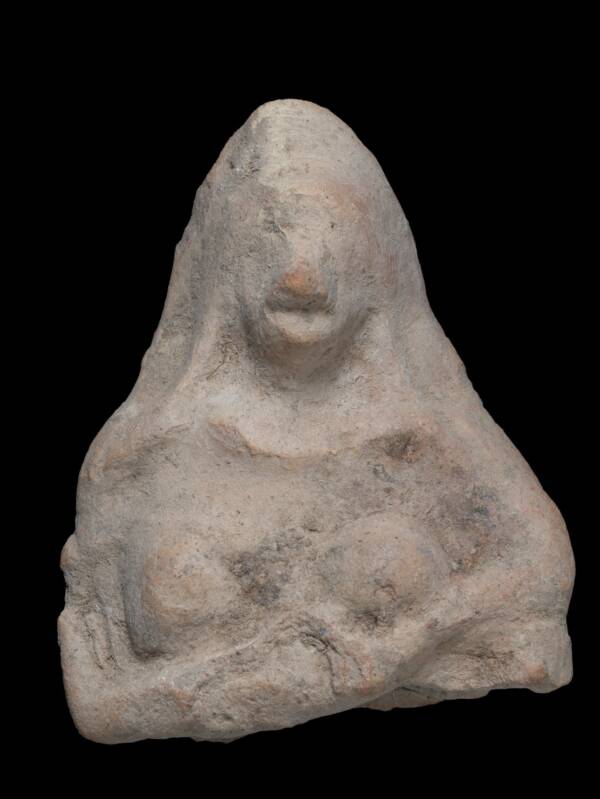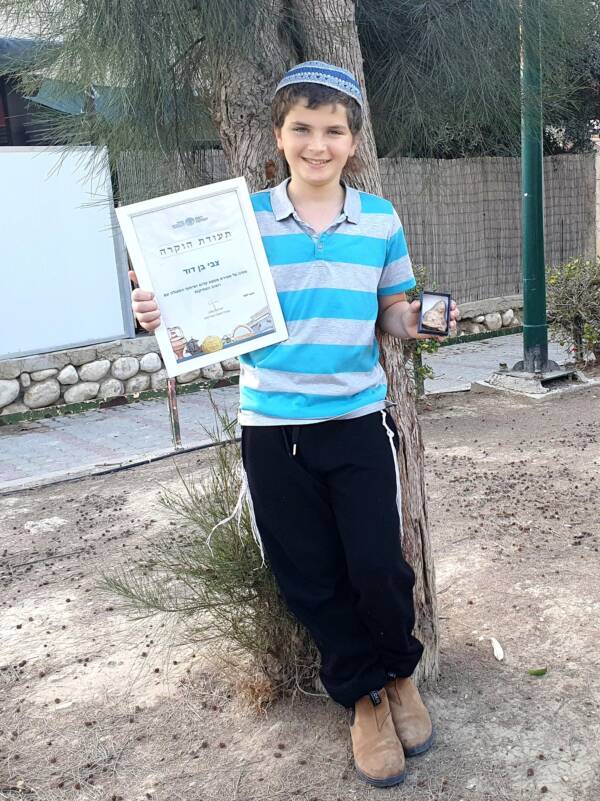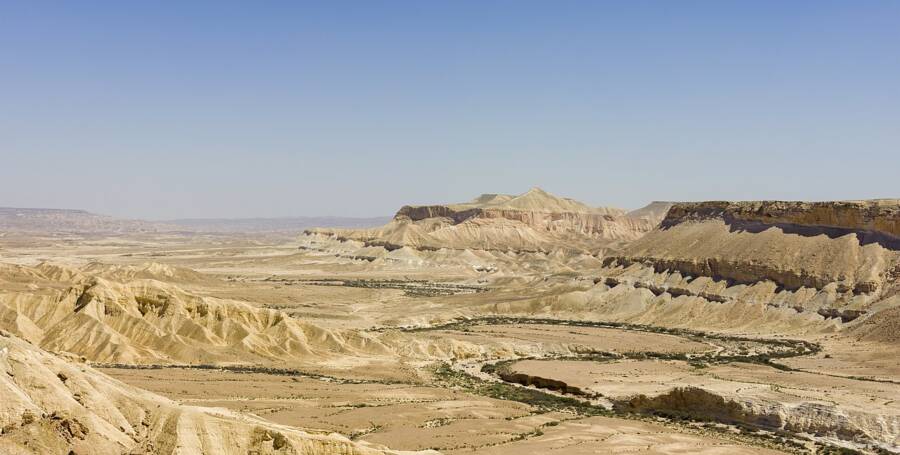Zvi Ben-David was on a hike with his family near the Besor River when he suddenly noticed a strange object. When he picked it up, he realized that it was a ceramic figurine of a woman.

Facebook/Israel Antiquities AuthorityAlthough time has sanded away some details, the amulet appears to depict a woman.
While on a hike with his family in Israel’s Negev region, 11-year-old Zvi Ben-David noticed something unusual near the banks of the Besor River. The object — which less discerning eyes might have dismissed as a lumpy stone — turned out to be a 2,500-year-old “fertility amulet.”
“The figurine that Zvi discovered is so rare that only one such example exists in the National Treasures collection,” the Israel Antiquities Authority (IAA) announced on Facebook.
The Ancient Fertility Amulet Found By Zvi Ben-David In Negev, Israel
The ceramic artifact is small — just seven centimeters high and six centimeters wide — and its details have faded after thousands of years. But it seems to depict a woman with a prominent nose, wearing a scarf that covers her head and neck. Her hands appear to be folded underneath her chest.
IAA archaeologist Oren Shmueli and curator Debbie Ben Ami believe the figurine is about 2,500 years old.
“It was probably used in the sixth-fifth centuries BCE, at the end of the Iron Age or in the Persian period — the late First Temple period, or the return to Zion,” they said. The First Temple period refers to King Solomon’s Temple, which, in the Bible, was a temple completed around 957 B.C.E. and destroyed around 587 B.C.E.
Pottery figurines like this, depicting women, were used during different periods of history in Israel. “They were common in the home and in everyday life,” explained Shmueli and Ben Ami. “[They] apparently served as amulets to ensure protection, good luck, and prosperity.”

Facebook/Israel Antiquities AuthorityThe IAA gave Ben-David a certificate of appreciation for his remarkable discovery.
Back in ancient times, it wasn’t uncommon for people to turn to fertility amulets like these. Families suffered from high infant mortality rates — about a third of babies died — and people lacked understanding about medicine and hygiene. Women who struggled to get pregnant often turned to amulets like these for help.
“In the absence of advanced medicine,” noted Shmueli and Ben Ami, “amulets provided hope and an important way of appealing for aid.”
After stumbling across the artifact, Ben-David showed it to his mother. Miriam Ben-David, a professional tour guide, immediately recognized the historical significance of the amulet. She contacted the IAA to report their find — to the delight of the IAA’s team of archaeologists.

Facebook/Israel Antiquities AuthorityMiriam Ben-David, Zvi’s mother, is a professional tour guide and recognized the importance of her son’s find.
“The exemplary citizenship of young Zvi Ben-David will enable us to improve our understanding of cultic practices in biblical times, and man’s inherent need for material human personifications,” the organization said on Facebook.
Astonishing Archaeological Discoveries Made In Israel In Recent Years
Zvi Ben-David is not the first child to make an impressive archaeological discovery in Israel in recent years. In January 2020, a 13-year-old found a stone burial inscription while foraging for mushrooms.
“I immediately recognized that it was something ancient,” said the boy, Stav Meir. “I studied archaeology in school with the Israel Antiquities Authority, so I can easily identify antiquities when I see them.”
Other children — some as young as seven or eight — have also picked up ancient relics.
“Israel is a very small country, intensively settled over thousands of years, and there are 37,000 registered archaeological sites, so almost everywhere you have the potential to find things,” noted Yardenna Alexandre, an IAA research and field archaeologist stationed in the Jezreel Valley.
The Nahal Besor, where Ben-David found the fertility amulet, has been the subject of extensive excavation for decades. Significantly, it is the site of the Bronze Age settlement of Tel Gamma.

Wikimedia CommonsBen-David made his find near the Besor River in Israel’s Negev desert region.
The region also plays a significant role in biblical stories. The Book of Samuel describes how hundreds of King David’s men came to the Besor. While some stayed behind, others rode on with David.
Given Israel’s ancient history, it’s not uncommon for people to stumble upon incredible discoveries. However, it’s illegal for anyone to actively search for archaeological relics without a proper license.
Instead, they’re meant to report such finds to the IAA — which is exactly what Zvi Ben-David and his family did after he discovered the fertility amulet at Nahal Besor.
“The whole Ben-David family deserves a huge shoutout,” said the IAA on Facebook. “Don’t you agree?”
After reading about the fertility amulet found by a boy in Israel, learn about the discovery of an Israeli temple where Jesus Christ is said to have performed miracles. Then, check out these 49 historical photos of Jerusalem before the creation of the state of Israel.





